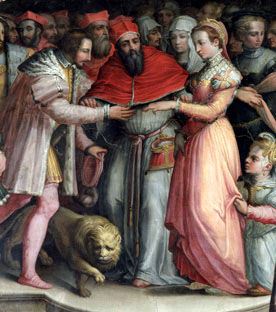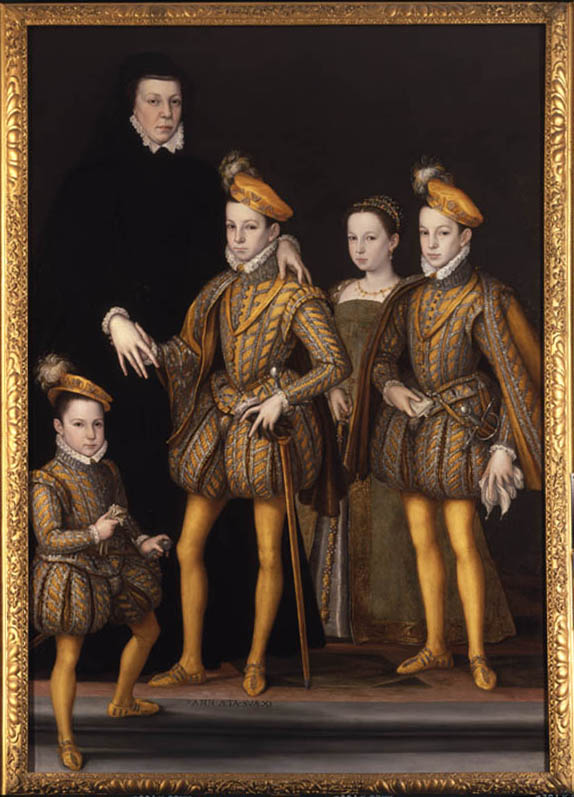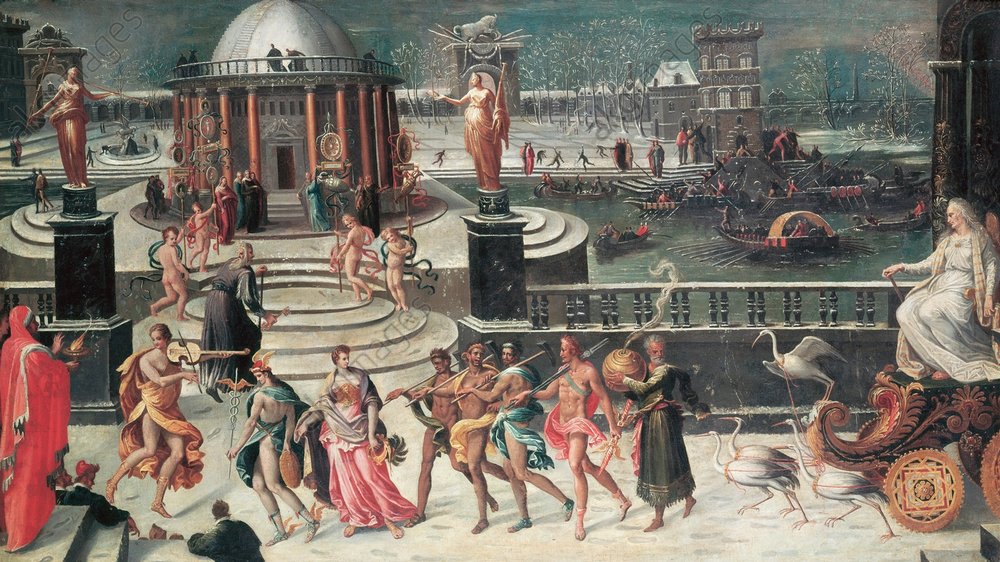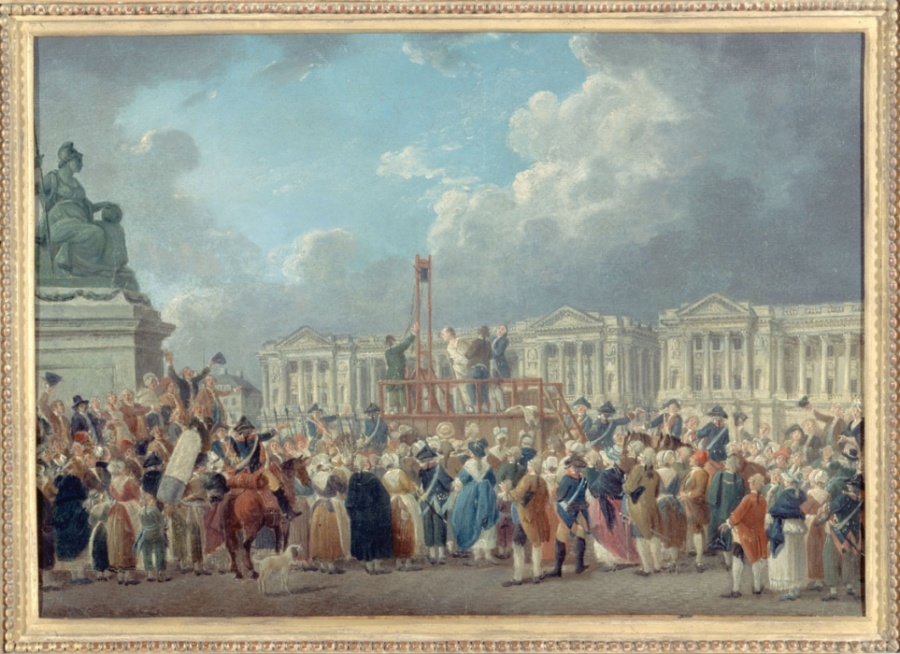
The evil and wicked Catherine de Medici was a Queen consort, a Queen regent, and the mother to three French kings. Her reputation through the ages is one of a diabolical woman who strove for power, sacrificing her children, her country and her principles. According to history she used poison to murder her enemies, ruled over a sexually deviant royal court, and massacred thousands of Protestants during the religious wars of the 16th century. But was she really evil? Have historians through the last four centuries treated her unfairly? If so, let’s re-examine the doings of this so-called evil French Queen.
background of catherine de medici
Catherine de Medici was born in Florence in 1519. Her father was Lorenzo de Medici, the powerful ruler of Florence. Her mother was Madeleine de La Tour d’Auvergne, a wealthy Frenchwoman who had married into the Medici family as part of negotiations between the Vatican and the French throne. Unfortunately for Catherine her parents died within weeks of her birth, possibly from the plague, and she was raised by relatives.

Catherine moved to France when she was 14 years old as the wife of Henry II. He was not yet the King, not even the Dauphin (next in line to the French throne), but by 1547 Henry II was King and Catherine was his Queen Consort. Whilst Catherine was forced to publicly endure her husband’s favourite mistress, Diane de Poitiers, she and Henry II had ten children in all, six of whom survived childhood.
The life of a French queen was largely ceremonial. Women in France were generally not allowed to inherit property or to have any involvement in public life. The domestic sphere was their domain and their role was to provide and raise children. For a queen, giving the throne a male heir was really her sole responsibility. Luckily for Catherine she provided three – François, Charles and Henry.

gaining in power and influence
In 1559 Henry II was killed during a jousting tournament (jousting became less popular after this event). His son, François II, aged 15, was now the French King (and incidentally was married to Mary, Queen of Scots). Although he was old enough to officially rule on his own, he was of a sickly nature and Catherine became very much involved in political decisions. Alas, François II died a year later and the French crown passed to the ten year old Charles IX. Given his young age Catherine was appointed Regent, which meant she was basically responsible for policy decisions and state business.
Unfortunately Charles IX died in 1574 and his brother Henry III became King. As any mother grieves the loss of her children, Catherine lamented “I am so wretched to live long enough to see so many people die before me”.
Catherine was a driving force behind the decisions of her three sons, three successive kings.
Horrors of the Saint Bartholomew Day Massacre
The reign of Catherine’s sons took place in a France which was deeply divided over religion. The Protestant Reformation had begun in Europe and the French Protestants, the Huguenots, were demanding the right to worship. The Catholics were unrelenting in their refusal. The resulting French Wars of Religion were to last for over 30 years, ending only in 1598.
Persecution of the Huguenots had begun well before Catherine’s time. She made attempts at reconciliation with the Edict of Amboise in 1563 which legalised Protestant worship (this may have ended the first religious war but did not last). She also arranged for the marriage of her daughter Marguerite de Valois to Huguenot Henry of Navarre (who would later become King Henry IV).
The crisis point in the civil wars over religion came in 1572 with the Saint Bartholomew Day Massacre. It was the night of 23 August, and many of the Huguenot elite had assembled in Paris to celebrate the wedding of Marguerite and Henry of Navarre. But Catholic Paris was not a Protestant city, nor were they tolerant. Tensions were also high at this time due to poor harvests and an increase in taxes.

The order was given to the King’s guards: kill prominent Huguenot leaders. As the news spread throughout Paris, a wave of mob violence descended on the city and angry, scared Catholics murdered Protestants in their homes, on the streets, wherever they could find them. The outbreak of mass hysteria and violence soon spread to other parts of France. It is estimated around 3,000 Huguenots were massacred in Paris and 70,000 in France over the several weeks it took for the violence to end.
For hundreds of years historians have blamed Catherine for ordering the bloodbath in an attempt to seize power for herself. This has been her legacy, and a large part of why she has been considered an evil queen. Is it accurate?
In a word, no.
Within two days, Charles IX claimed responsibility for the massacre. Catherine held a meeting with her son and other noblemen just prior to the assassinations, and it is likely she was involved, with others, in the assassinations. But she didn’t act alone.
everyone hates catherine
As Catherine became more visible in the public eye, she became an easy target in which to place blame for all the troubles of France. A massacre? Blame Catherine. Too many Italians in France? Blame Catherine. Too much public spending? Blame Catherine.
In 1574 an anonymous author published the work Discours merveilleux de la vie, actions, et déportements de Catherine de Médicis. It was highly critical of Catherine, and considered the foundation of the ‘evil queen’ legend.
Who in one day hath cause to murder more men, women and children, then did Brunehaut in all his wars … For the nature of this woman is always to be doing evil: and this much more I say, that never woman who yet goverened our Realme, did breed more mischief. I will not here repeat the monstrous vices both of her self and of others.
Discours merveilleux de la vie, actions, et déportements de Catherine de Médicis, 1574
This enormously popular pamphlet was printed when Charles IX had died and Catherine was acting as regent until her son Henry III could return to France from Poland where he had been crowned King of Poland. Its purpose was to create unrest and mistrust in Catherine’s rule so that she could not consolidate her power.
Other dreadful accusations thrown at Catherine at the time were:
- She fatally poisoned Jeanne d’Albret, a leading Huguenot and mother of Henry of Navarre, by presenting her with a pair of poisoned gloves.
- A room in the château of Blois contains hundreds of small cupboards which were used to store her poisons. (Related post: Château of Blois)
- She provided prostitutes for her son, Charles IX, while he was still a minor.
- She encouraged her sons to watch cockfighting matches in order to make them cruel.
- She dabbled in the occult and astrology and had strange friends such as Nostradamus.
When women assumed positions of power they were judged more harshly than men. The daughters or wives of kings were not allowed to be queen; only the queen mothers who found themselves with an infant king were (usually, not always) allowed to act as their regent until their son came of age. Women who ventured boldly out of their domestic sphere were fair game as far as men were concerned.
orgies at the palace
Sexual deviancy was a common accusation hurled at women in power. A description of a banquet held by Catherine at the Château of Chenonceau in 1577 by Pierre L’Etoile (who was not there) stated:
At this lovely banquet, the most beautiful and, charming women of the court were employed as serving-ladies, being half naked with their hair down loose like brides.
One of the more ludicrous accusations, still rehashed even today (yes, I mean you, Wikipedia), is that Catherine purposefully filled her court with beautiful seductresses whose sole aim was to lure and deceive men into doing Catherine’s bidding. They came to be known as Catherine’s ‘flying squadron’, aristocratic women who acted as wanton and lusty spies to collect useful information to further Catherine’s grasp of power. It sounds more like a male fantasy to me.
It is true the royal court of Catherine held many women of noble birth, some of them beautiful. Aristocratic families in France had the right to a place at court, and most were there for their own advantage, whether it be power or money. But the women who were chosen by Catherine for her household were chosen for their intelligence, for their influence, for their experience and wisdom, not their beauty. There were affairs and indecent behaviour aplenty, but that was normal in every French royal court.
was catherine de medici an evil queen?
Much of the material used to prove Catherine was an evil queen came from satirical pamphlets and derogatory publications such as the ones stated above. Over the years, (male) historians reported them as fact, and so the legend of the black hearted, wicked, evil Queen Catherine de Medici was born.
Many historians are now revisiting the importance of Catherine in keeping the French state together in this period of immense religious and political crisis.

She was a great patron of the arts and invested heavily in new and innovative artists. Her music, games and dancing spectacles, called ‘magnificences’, were very popular and highly praised. They were cleverly designed not only as entertainment, but to show all of France and the rest of Europe that the monarchical order and superiority of the French court remained unchanged.
In the space of 42 years France saw four different kings – one was Catherine’s husband, the other three were her young sons. Far from sacrificing her sons for her personal gain, she worked with them to ensure continuity and the prestige of the French monarchy. Did she make mistakes? Of course, who doesn’t. But that does not make Catherine de Medici an evil queen.
further links
The featured image on the home page of the blog is one of the Valois Tapestries, commissioned by Catherine de Medici around 1580. There are eight of these exquisite and gorgeously detailed tapestries.
The video below is from an exhibition of the Valois Tapestries at the Cleveland Museum of Art in 2019.
sources
Una McIlvenna, “A Stable of Whores’? The ‘Flying Squadron’ of Catherine de Medici” in Akkerman, N (Ed.). Houben, B (Ed.). The Politics of Female Households: Ladies-in-Waiting across Early Modern Europe, Brill, 2014.
“La Florentine” or “La bonne Françoise?” Some Sixteenth-Century Commentators on Catherine de’ Medici and her Patronage in Artful Allies: Medici Women as Cultural Mediators, Christina Strunck, Silvana Editoriale, 2011.
M. Sutherland. “Catherine De Medici: The Legend of the Wicked Italian Queen.” The Sixteenth Century Journal Vol. 9, no. 2, July 1978.
Una McIlvenna, Scandal and Reputation at the Court of Catherine de Medici, Taylor & Francis Group, 2016.



